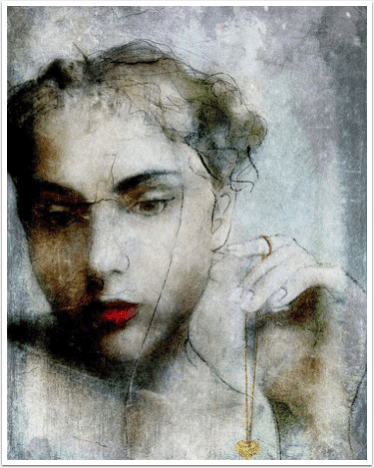Exclusive Interview With Molten Drum Machine iPad App Developer, Peter Johnson
We’ve got to tell you this app is great, you will love it, if you love making music. Molten is a powerful and intuitive tool for creating percussive sounds and rhythm sequences.
Using a revolutionary approach to grid based pattern sequencing that divides time to instantly add tuplets and fills to your drum programming. Molten is built on a versatile synthesizer that allows you to play and process your own sound samples. The kits can be mangled, filtered and crushed using the multi-touch interface.
We are currently reviewing this app but in the meantime we wanted to interview the developer, Peter Johnson to find out how this app was created, from the first thought to the actual production. Read our exclusive interview to find out more about this truly fascinating app.
The Beginning
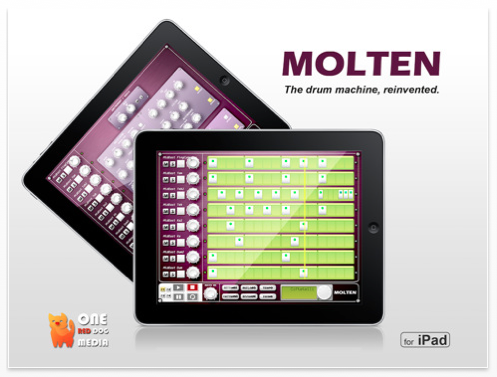
1 Please explain how your app was originally thought of and what were your thoughts behind the marketplace, specifically?
Molten Drum Machine began life as a standalone Mac OS X application and Audio Unit. It was about the time Yamaha first started to show off the Tenori-On. Here was a device that you could pickup and interact with, like a portable Monome, with a matrix of buttons you could use as a step sequencer. I really liked that design but felt I wanted to really get in-between the notes, to not be restricted by 16-steps in a 4/4 pattern. So I started bouncing a few ideas around with an accomplished musician friend and hit upon this idea of being able to split the notes. This became the Division feature in Molten. In a physical device like the Tenori we’d somehow be able to turn one button into many, but that’s a lot easier in software. So I built the early version of Molten in late 2007. After using it for a while with a Wacom, it really felt like it needed to be on a touch screen. When Apple unveiled the iPad, I thought that’s the hardware that is perfect this, with its portability and large screen resolution. So I began working on Molten in June 2010 and it was released in November. At first it was going to be a pure MIDI sequencer but it wasn’t until iOS4.2 that Apple added CoreMIDI. I think it’s important for a mobile app to operate standalone and a drum machine works well with a step sequencer.
The Design

2 Explain the design, how you came up with the colors and themes.
If Molten was an actual hardware drum machine, this is how I’d want it to look. This is reflected in the interface design. When I started development the Korg iElectribe was very popular and what Korg had done with some of their iOS specific UI, like the toolbar, file handling, and settings menus, all seemed quite intuitive. It struck a nice balance between emulating a physical device and catering for the extra software features. I also thought people would be used to that system and consistency is important in interface design. The Elektron Machinedrum inspired the synthesizer voice architecture. Apple’s own Garageband has also shown how something seemingly simple can be very effective. I think developers are still figuring out what works and what doesn’t.
Target Market
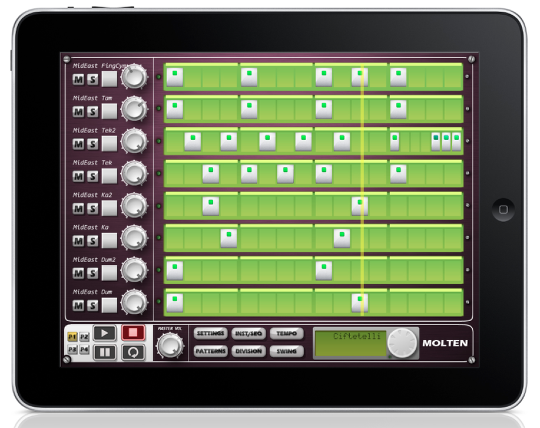
3 Who do you see as the main target market for this app in terms of age, genre and expenditure?
I don’t think there’s any limit to age or musical genre. In fact I wanted the musical genre to be as flexible as possible, making it easy to compose beats from 4/4 techno to Indian and Middle Eastern music with their interesting time signatures and extensive use of tuplets. I hope that some of the included samples and patterns reflect this.
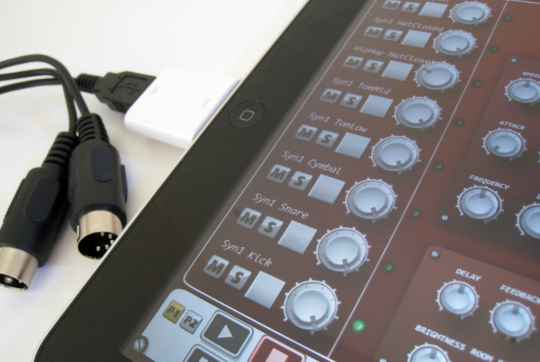
4 How long did it take from the original planning to the production process of this app?
The app took about 5 months and I work full-time on One Red Dog. For the first two months or so I had another programmer helping on a short-term contract and a graphic designer. Once the bulk of the work had been done, I did the manual, website, marketing and then the release. Since then I’ve been fixing bugs and adding new features. I recently released an update that includes support for multitasking background audio and enhanced CoreMIDI features. As the market grows and we see more music apps, people are starting to combine many apps running on a single iPad, and sometimes many iDevices, into their music creation workflows. This is very exciting and I want to try and provide the features that help people to streamline their workflows.
Sales
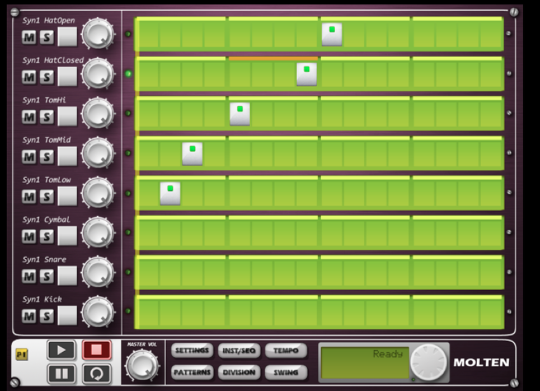
5 How do you predict sales to be, is there a good solid market for this style of app?
There are a lot of excellent apps out there, some with really unique ideas. Plus there are very polished apps that have big development budgets. It’s very difficult to predict sales. I have no visibility of what the sales numbers are for individual apps. There’s a lot of guesswork looking at where your own app sits in the charts and how that chart position relates to sales, along with what you may hear from other people as well. I think the music app segment is very competitive, probably not quite as competitive as the games category but up there. With Korg and now Apple entering into the music app market really shows that this is serious segment.
Obstacles
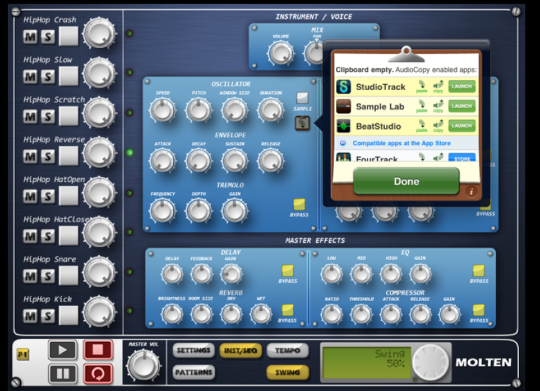
6 What has been the hardest obstacle you have had to overcome regarding this app development?
The initial task of getting the audio engine up and running was quite difficult but the biggest challenge was getting MIDI Sync to work properly (and I’m still not convinced it’s acceptable). Even though I was re-using a lot of the software I’d written for the original standalone version of Molten, with the same CoreMIDI API’s, it just didn’t work so well on the iPad.
Third Parties
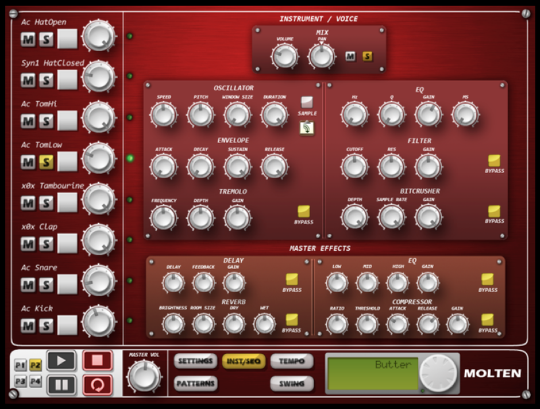
7 Would you consider developing apps for third parties?
Yes I’ve worked on a handful of games that are also in the App Store. Molten doesn’t sell many units and I supplement my income where I can with contracting or part-time work.
App Store
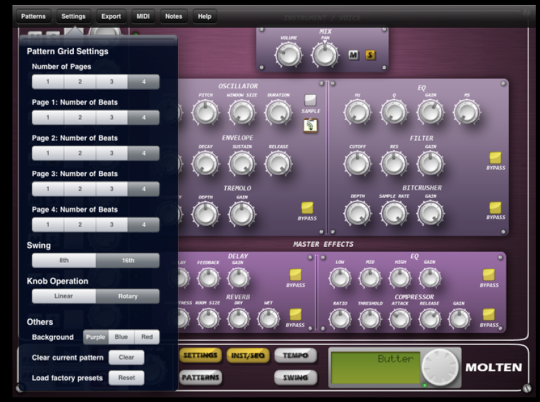
8 What have you learnt from the App Store?
It’s tough out there and you have to grow a very thick skin. The App Store review system can be brutal and with no ability for the developer to respond you have to take it on the chin. So it’s important to stay positive and for every one star review I’ve had, I’ve also had people send me messages saying how great the app is. Some people win the Lottery and have an app that sells into the millions and we get carried away with the “app gold rush”. But it’s not like that and developing software is hard work. You have to sell it in, and if it doesn’t sell it makes continuing development difficult.
Apple
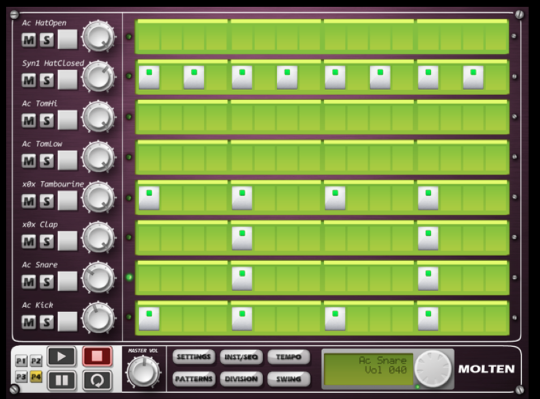
9 Have Apple supported you well with your App development?
Not directly, they’re a massive organization with hundreds of thousands of people writing iOS apps and I’m one person. But I’ve been working in the Apple development space for several years now, starting prior to the iOS devices. Apple have a number of forums and mailings lists where it’s possible to get help, but as we’re producing proprietary software people are sometimes quite guarded about how things work. However, when you can make contact they are very helpful. There’s also a good community of iPhone developers now and there are some very helpful developers around. I’ve had the good fortune of being able to get some advice from them, like from the developers of FunkBox and Little Things who have offered some fantastic support. I’ve also started making little pieces of software available on my blog, maybe others will find these useful.
The Future
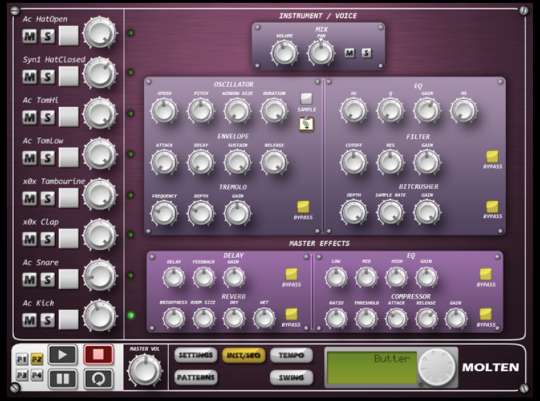
10 What next, are you developing another app, would you go for the same genre again, if not which?
The most requested feature is a song arranger mode and I’m currently looking at developing a new app, a “Molten2”, which has a larger feature set in the core sequencer. It’s very early days yet so it might be several months away and turn into something completely different, but that’s the current plan.
Our Support
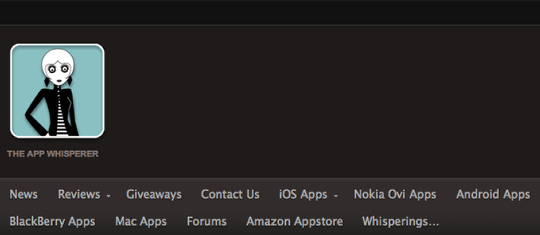
11 What do you think about TheAppWhisperer.com? Have we helped you? Would you recommend us? Have we been supportive?
I started iPad app development as a brand-new operation knowing very few people or how important sites like The AppWhisperer are. It’s remarkable how big the Apple ecosystem is and how hungry people are for information. While at the same time how welcoming sites like TheAppWhisper have been in helping us with the PR.
This app retails for $4.99 in the App Store and you can download it here.
